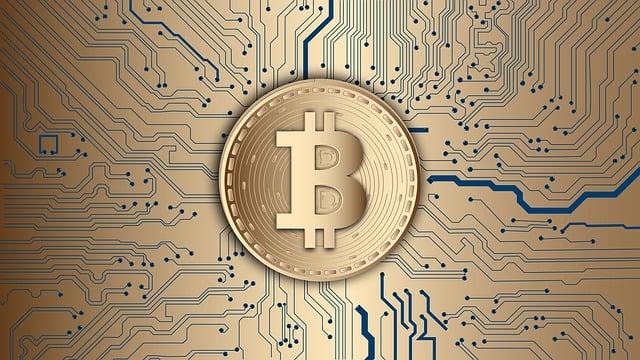Bitcoin, the world’s first decentralized cryptocurrency, has garnered both global attention and intense scrutiny since its creation in 2009. While it started as a niche innovation, it has evolved into a major financial asset, sparking debates across finance, economics, and politics. One of the most provocative questions surrounding Bitcoin today is whether it poses a genuine threat to central banks and the traditional financial system.
In this article, we explore Bitcoin’s role in the global economy and examine the potential risks it poses to central banks, the current monetary system, and what it means for the future of global finance.
What is Bitcoin, and Why is it Different?
Before diving into the potential threat Bitcoin poses to central banks, it’s important to understand what Bitcoin is and why it’s different from traditional currencies.
Bitcoin is a decentralized digital currency that operates on a peer-to-peer network without the need for an intermediary like a bank. Transactions are verified through a process called mining, and the Bitcoin network is maintained by a distributed group of miners, rather than a central authority.
Unlike fiat currencies, which are issued and regulated by governments, Bitcoin operates independently of any government or financial institution. It uses a blockchain, a public ledger that records every transaction, making it transparent and immutable. Its limited supply (only 21 million bitcoins will ever exist) stands in stark contrast to the inflationary nature of fiat currencies, which can be printed at will by central banks.
This decentralization, coupled with Bitcoin’s limited supply and transparency, raises fundamental questions about the role of central banks and their control over monetary policy.
1. Bitcoin as a Store of Value: Challenging Traditional Currency Systems
One of the most widely discussed aspects of Bitcoin is its potential to act as a “store of value,” much like gold. A store of value is an asset that maintains its value over time and can be used as a medium for saving wealth. Central banks use fiat currencies, like the U.S. dollar, to maintain the stability of their economies, but these currencies can be subject to inflation when governments print more money.
Bitcoin’s appeal as a store of value stems from several key factors:
- Fixed Supply: Bitcoin’s maximum supply is capped at 21 million coins, meaning that no new coins can be created after this limit is reached. This contrasts sharply with fiat currencies, which can be printed in unlimited quantities by central banks.
- Hedge Against Inflation: Many Bitcoin advocates argue that, unlike fiat currencies, Bitcoin is immune to inflationary pressures because of its fixed supply. In times of economic uncertainty or when central banks print large amounts of money (such as during periods of quantitative easing), Bitcoin’s fixed supply makes it an attractive alternative for investors looking to protect their wealth from inflation.
While Bitcoin’s price volatility has made it a risky store of value for some, it has also attracted institutional investors and hedge funds who view it as a potential hedge against inflation and currency devaluation, especially in regions with high inflation rates.
For central banks, this poses a challenge. As Bitcoin gains acceptance as a store of value, it may reduce the demand for national currencies, especially in countries with unstable economies or hyperinflation. If Bitcoin becomes widely adopted, it could diminish central banks’ control over the money supply, potentially destabilizing economies that rely on fiat currency systems.
2. Decentralization: Undermining the Control of Central Banks
One of Bitcoin’s most controversial features is its decentralization. Central banks are responsible for controlling monetary policy, regulating interest rates, and managing inflation to stabilize economies. They can manipulate the supply of money to influence economic activity, making it possible for them to respond to crises by increasing liquidity or adjusting interest rates.
Bitcoin, however, operates independently of any central authority. The decentralized nature of Bitcoin means that no single entity can influence its supply, demand, or value. This undermines the power of central banks, who traditionally control monetary policy and manage currency supply to stabilize their economies.
The decentralization of Bitcoin also means that it is resistant to government control. While central banks can impose capital controls, restrict foreign exchange, or implement policies like negative interest rates, Bitcoin operates outside the reach of these regulations. This could limit the effectiveness of traditional monetary policy and make it more difficult for governments to intervene in financial markets.
As more people and businesses adopt Bitcoin for payments, savings, and investments, central banks may face growing challenges in maintaining control over their domestic currencies. If Bitcoin (or other decentralized cryptocurrencies) continues to gain traction, it could reduce the influence of central banks on global financial markets, making it harder for them to respond to economic crises or implement effective monetary policy.
3. Bitcoin and the Rise of Central Bank Digital Currencies (CBDCs)
In response to the growing popularity of cryptocurrencies like Bitcoin, many central banks have begun exploring the concept of Central Bank Digital Currencies (CBDCs). A CBDC is a digital version of a nation’s fiat currency, issued and controlled by the central bank.
CBDCs would offer some of the advantages of cryptocurrencies—such as fast, low-cost transactions and the potential for increased financial inclusion—while allowing central banks to retain control over the money supply and monetary policy. Unlike Bitcoin, which operates on a decentralized blockchain, CBDCs would be centralized and fully controlled by governments and central banks.
The development of CBDCs represents a direct attempt by central banks to counteract the rise of decentralized cryptocurrencies like Bitcoin. By creating their own digital currencies, central banks hope to maintain control over the monetary system, reduce the risks posed by decentralized currencies, and enhance the efficiency of financial transactions.
However, the emergence of CBDCs does not necessarily eliminate the threat posed by Bitcoin. While CBDCs could provide many of the benefits of digital currencies, they would still be subject to government control, and their value could still be influenced by inflationary pressures. Bitcoin, with its decentralized nature, fixed supply, and transparent ledger, offers an alternative that is outside the control of any government or central bank.
In this sense, Bitcoin could remain a challenge to central banks, even in a world where CBDCs exist. If Bitcoin continues to be seen as a more reliable store of value or a better hedge against inflation, it may continue to draw investors away from traditional fiat currencies, limiting the effectiveness of CBDCs.
4. Bitcoin and the Potential for Financial Sovereignty
Bitcoin’s decentralized nature also appeals to individuals seeking financial sovereignty—the ability to control their wealth and financial transactions without relying on banks, governments, or intermediaries. In regions with unstable currencies or oppressive regimes, Bitcoin provides a way to escape the control of central banks and traditional financial systems.
For example, in countries like Venezuela, where hyperinflation has rendered the national currency nearly worthless, Bitcoin has become an alternative way to store value and conduct transactions. Similarly, in countries with authoritarian governments that impose strict capital controls, Bitcoin offers a means of circumventing restrictions on wealth movement and financial freedom.
As more people turn to Bitcoin for financial sovereignty, central banks may find their influence further eroded, especially in regions where their currency is seen as unstable or unreliable. In this sense, Bitcoin represents not just a threat to central banks, but also to the broader financial system that relies on centralized control.
5. The Future of Bitcoin and Central Banks
Despite the potential challenges posed by Bitcoin to central banks, it is unlikely that Bitcoin will fully replace fiat currencies or central bank-controlled monetary systems in the near future. Bitcoin’s price volatility, scalability issues, and limited adoption as a payment system mean that it is not yet a practical alternative to traditional currencies for everyday transactions.
However, Bitcoin’s role as a store of value, its decentralized nature, and its potential to challenge traditional monetary systems cannot be ignored. As adoption continues to grow and more institutional investors get involved, central banks will have to adapt and consider how to respond to the rise of cryptocurrencies.
Some central banks may choose to embrace Bitcoin and other cryptocurrencies, integrating them into their financial systems and regulations. Others may continue to resist, focusing on the development of CBDCs or other regulatory measures to maintain control over their domestic currencies.
Ultimately, Bitcoin’s impact on central banks and the global economy will depend on its continued adoption, technological developments, and the regulatory landscape. One thing is certain: the rise of Bitcoin has already started a broader conversation about the future of money and the role of central banks in a digital economy.
Conclusion
Bitcoin’s role in the global economy presents both opportunities and challenges. For central banks, it represents a potential threat to their control over monetary policy and the traditional financial system. While Bitcoin is unlikely to replace fiat currencies entirely in the short term, its rise has already forced central banks to reconsider their approach to money and monetary policy. Whether Bitcoin will continue to be a disruptive force in the global economy or evolve into a more stable and widely adopted asset remains to be seen, but its influence on the future of money is undeniable.
As Bitcoin and other cryptocurrencies continue to develop, the global financial landscape may be on the verge of a profound transformation—one in which central banks must adapt or risk losing their grip on the monetary system.

